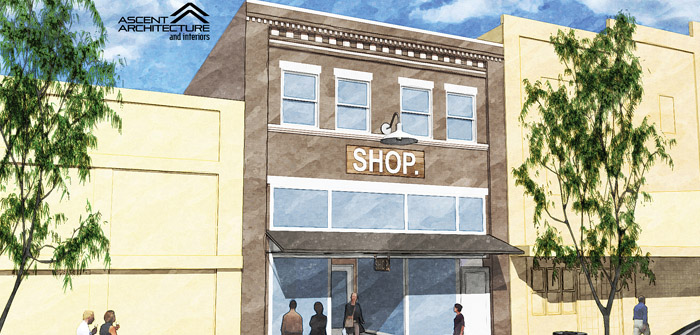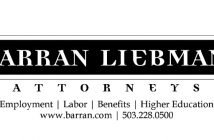At Ascent, we’re are pleased that many building owners are approaching us about rehabilitating their existing buildings for new uses, to improve aesthetics or to make them more attractive to potential tenants.
These projects offer us a chance to make a positive impact on the energy use of existing building stock, which in turn fulfills our company core value of environmental stewardship. Our team believes revitalizing existing structures is often the most practical and impactful sustainable design option for our clients. These upgrades can also reduce building operational costs.
According to its 2012 census report, the U.S. Energy Information Administration estimates the United States is home to 5.6 million commercial buildings, with a total of 87 billion square feet of floor space. The report further notes that about half of all commercial buildings were constructed before 1980, with only about 12 percent built since 2003. (For the full report, see U.S. Commercial Building Stock: Results from EIA’s 2012 Commercial Building Energy Consumption Survey at http://www.eia.gov/consumption/commercial/reports/2012/buildstock/index.cfm).
That means much of the country’s buildings do not benefit from current energy-efficient systems, materials or technology. Upgrading these building offers great potential in improving the environmental impact of our built environment.
Most exterior building materials and interior heating and lighting systems have a typical life expectancy of 20 to 30 years. During remodels, we help clients explore the opportunity to replace the failing and outdated portions of their buildings with more energy-efficient products and systems. Sometimes, these projects also qualify for tax credits and utility rebates incentives, which we can help coordinate.
The following are five simple ways to improve the energy efficiency during a remodel and make an existing building more sustainable:
1. Add insulation whenever you can. This is my favorite strategy because it’s usually very cost effective. Any time the wall, roof or floor is open for construction, it’s a great time to insulate. A variety of insulation products are available, so insulating even the tightest spaces is possible.
Bonus Strategy: Don’t stop at insulation. Find and seal air leaks in exterior locations, such as around windows and doors, penetrations through the exterior wall and recessed light fixtures.
2. Replace lighting with more efficient fixtures. Current T8 fluorescent lamps and electronic ballasts are as much as 40 percent more efficient than T12 light fixtures. T8 lamps didn’t enter the market until the 1980s, so if your building is more than 20 years old, it likely could benefit from a lighting upgrade that will save energy and operational costs.
Bonus Strategy: Step up to newly improved LED lighting to save even more energy and increase lighting quality as well. Additionally, replace incandescent exit signs with new 5-Watt LED exit lights.
3. Add occupancy sensors to control lighting. Why light an empty room? Occupancy sensors are easily retrofitted into existing spaces and can drastically cut energy consumption by automatically turning off lights when a room isn’t in use.
Bonus Strategy: A huge array of lighting controls, such as dimming and daylight harvesting, can also be added inexpensively to new LED lighting.
4. Service your heating system and program your thermostat. Something as simple as replacing your air filters and servicing the heating and water heating systems can help reduce a building’s energy consumption. While you’re at it, make sure the system is programmed at the appropriate set points and for the hours that you’re in the building. If you don’t have a programmable thermostat, I recommend having a qualified heating system technician install one.
Bonus Strategy: If your system is more than 20 years old, consider the benefits of a complete replacement. New systems are more energy-efficient and might even improve the comfort of your space by offering the option of adding additional zones (rooms or spaces that can be controlled independently).
5. Improve your existing windows. You don’t necessarily need to replace your windows to make them more efficient. Consider adding storm windows, window films, blinds or exterior shades to cut down on heat loss in winter and heat gain in the summer.
Bonus Strategy: Exterior landscaping can also provide shading for large windows or especially exposed building frontages.
If you receive a bill from Pacific Power or Cascade Natural Gas, Energy Trust of Oregon offers cash incentives for all the above energy efficiency strategies (as well as for your business equipment) to help off-set the cost of these improvements. So if you’re considering a remodel or just want improve the energy efficiency of your existing space, discuss your options with a licensed architect or Energy Trust of Oregon representative.
Seth Anderson, NCARB, LEED AP, is a member of the American Institute of Architects (AIA) and serves as extra-territorial director for the AIA Southwestern Oregon chapter. His specialty interests include building-enclosure design and investigation; code compliance; and energy-efficient design. Anderson is dedicated to serving his clients and colleagues through continuing education and improvements to the practice of architecture. He coordinates the daily activities of the team at Ascent Architecture & Interiors and is a licensed architect in Oregon, Washington, California, Arizona and Texas.
(Photo above courtesy of Ascent Architecture & Interiors)





